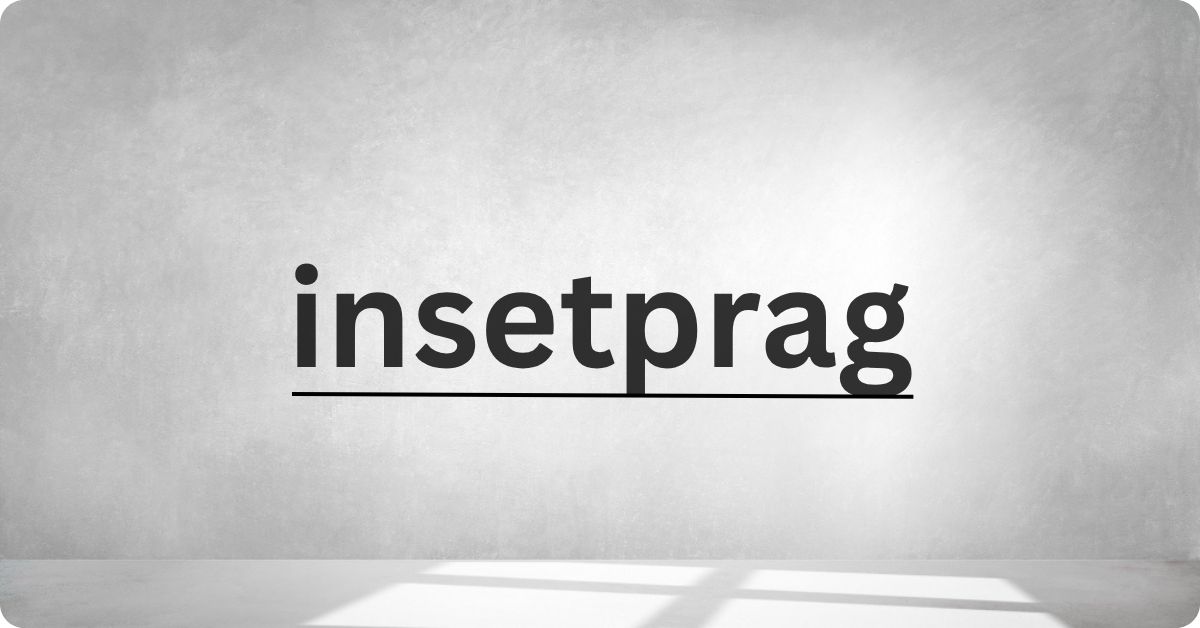Beyond words, there are innumerable complexities and subtleties that make language an enthralling riddle. For a long time, traditional pragmatics has provided the framework for understanding how communication environment influences meaning. Nevertheless, it frequently fails to adequately handle intricate situations involving nested contexts or interactions with several layers. Introducing insetprag, a new way of thinking about pragmatics based on a novel paradigm. Insetprag sheds light on our communication habits and brings us closer together than ever before by centering on the complex network of nested meanings. What makes this fascinating idea so revolutionary for the field of linguistics and communication studies? Let’s find out!
Limitations of Traditional Pragmatics
To comprehend the impact of context on meaning, traditional pragmatics has played a crucial role. When faced with complicated communication scenarios, though, its limits become clear.
Its propensity to oversimplify relationships is a big drawback. Everyday discussions give birth to a complex tapestry of nested meanings, which traditional models sometimes overlook in favor of single-layered contexts.
Furthermore, cultural and socioeconomic differences are often not taken into account by these models. The difficulty in finding a universally applicable solution stems from the fact that culturally specific understandings may be completely misunderstood.
Furthermore, ambiguity is a problem for classical pragmatics; for example, how can we understand multi-layered signals that depend on prior knowledge? Misunderstandings and faulty assumptions might result from this rigidity.
Our understanding of language exchanges is severely lacking when we stick to conventional methods alone in this increasingly complex and multi-faceted realm of communication.
The Emergence of insetprag: A New Perspective on Pragmatics
Thanks to changes in the field, insetprag is now a viable option in pragmatics. To fill up the gaps left by more conventional methods, we present this novel framework. It provides a more complete picture of communication by zeroing in on layered contexts.
The idea that language is frequently multi-layered with meanings influenced by contextual variables gives rise to insetprag. Beyond superficial readings, it highlights the interplay and impact of several levels on understanding.
This new way of looking at things motivates scholars to delve more into the links inside discourse. Underneath each layer are details that were previously unnoticed by traditional methods of examination.
New aspects of meaning-making are being uncovered as academics dive further into insetprag. As the relationship between context and purpose is more understood, our perception of written and spoken exchanges is altered.
Insetprag has the ability to revolutionize our comprehension of human communication due to its cross-disciplinary applicability.
You May Like:fontlu — Stylish Fonts & Easy Downloads
Key Principles and Concepts of insetprag
A number of novel rules are introduced in Insetprag, which alter our perception of pragmatics. The concept of communication levels is fundamental to this method. Layers allow for complex readings by representing multiple contexts.
Nested contexts have an important role, and this must be understood. In real-time talks, the meaning is impacted by the dynamic interaction of several levels. Ways in which language usage is examined are transformed by this interaction.
Stressing the importance of both speaker purpose and listener perception is another crucial idea. Both parts are necessary to understand communication dynamics in their whole, and Insetprag acknowledges this.
In addition, it promotes investigating how cultural variations affect pragmatic interpretation. The analytical scope of insetprag is expanded beyond conventional limits by including these parameters.
It is an intriguing area to investigate further since this new viewpoint paves the way for new lines of inquiry into language and social interactions.
Applications of insetprag in Language and Communication Studies
The fascinating potential uses of insetprag in the fields of language and communication studies are changing our perceptions of context. Recognizing several levels of meaning enables academics to delve into the intricate details that impact relationships.
Insetprag helps improve instructional strategies in classrooms. By using these ideas to student discourse analysis, educators may enhance their engagement tactics. As they negotiate complicated communicative settings, learners are able to get a better understanding through this strategy.
Furthermore, insetprag is useful for linguistic research since it gives frameworks for analyzing conversations with several layers. It draws attention to the dynamic between purpose and interpretation and urges researchers to examine how speakers use context to achieve certain effects (such as sarcasm or comedy).
In addition, insetprag may be used by businesses for training in workplace communication. Workers who take the time to learn nested pragmatics are better able to decipher communications, which in turn leads to more productive interactions among members of varied teams.
Potential Impact and Future Directions of insetprag
Outside of the academic community, insetprag might have far-reaching consequences. It provides information that has the potential to completely alter areas like machine learning and artificial intelligence. Artificial intelligence systems may learn human language with more subtlety if they used layered pragmatics.
Furthermore, this method has the potential to greatly improve educational settings. Teachers may incorporate insetprag ideas into their lesson plans to help students better understand and apply language’s subtleties.
Improving methods for resolving conflicts in social interactions is possible through the recognition of layered meanings. As a result, people’s motives and emotional states will be better understood.
We may witness the emergence of new multidisciplinary cooperation as research progresses. By combining the insights of psychologists and sociologists, linguists studying communication through the prism of insetprag might uncover even more nuanced patterns.
It is clear from these possibilities that this unique framework has fascinating new routes to explore in the future.
Conclusion
When trying to make sense of how people express themselves, the study of pragmatics has always played an important role. Nevertheless, when faced with the intricacies of layered relationships, conventional methods frequently fail. The introduction of insetprag is a watershed moment because it provides us with novel understanding-enhancing frameworks and fresh perspectives.
Insetprag welcomes the subtleties that emerge when discussions go through different social levels by centering on the multi-level character of pragmatic situations. Researchers and practitioners are encouraged to delve deeper into the dynamics of relationships in order to understand how meaning is formed, rather than limiting themselves to surface-level explanations.
Insetprag opens up new avenues of inquiry into hitherto unexplored areas of language and communication theory. From linguistics to AI, this new viewpoint has the potential to provide useful results.
Our current understanding of language in context might be drastically altered by the results of the continuing investigations into this idea. If people are open to these new concepts, we might be in for a more fruitful investigation of how people communicate successfully in a variety of settings in the years to come.
Read More:Anonibs: A Whisper in the Digital Night











